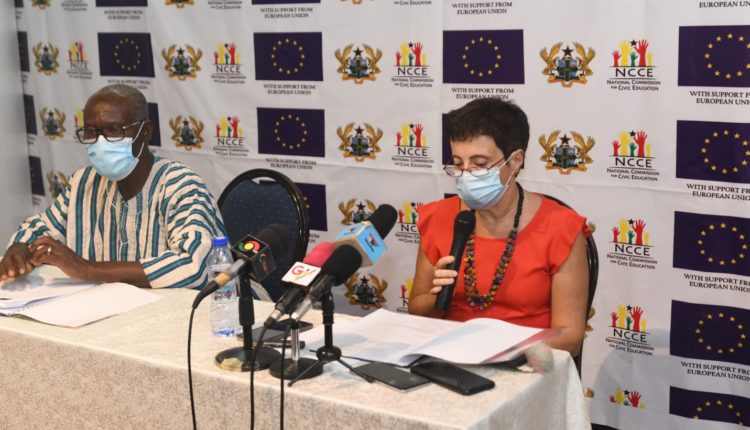Cocoa represents about 50 percent of the country’s total exports to the European Union (EU), with almost half of the cocoa products processed, according to the Head of the EU’s Delegation to Ghana, Diana Acconcia.
Speaking to manufacturers at a forum in Accra, Ms. Acconcia stated that the EU was Ghana’s second-largest trading partner last year, adding that Ghana’s trade relations with the EU is quite different from others.
The Head of the EU’s Delegation noted that the EU’s investment in the Ghana’s manufacturing sector is yielding significant results since most of the cocoa products exported into the EU market are processed.
As a result, Ms. Acconcia expressed her delight that this has also created jobs for the youth.
EU market still important
Also, she stated that most of Ghana’s trade is currently outside the African market.
However, she expressed optimism that with the start of the African Continental Free Trade Area (AfCFTA) agreement, the country is now rightly focused on the African market.
Yet, she pointed out that the EU market remains important for Ghana’s quest to boost exports.
“The fact that Europe is the first importer of food in the world, including Africa, is good potential for Ghana. Especially now that the Economic Partnership Agreement (EPA) has fully been implemented, making it easier for Ghana to get complete duty-free access to the European market” she said.
Interim Economic Partnership Agreement (EPA)
The implementation of the interim Economic Partnership Agreement (EPA) between the European Union and Ghana took off last week.
The EPA is a development-oriented free trade agreement. Under it, the EU provides duty-free, quota free access for Ghana’s exports to the EU from the first day of application. The process for opening up Ghana’s markets to EU exports (tariff liberalisation schedule) is in three main phases. Ultimately, Ghana is expected to progressively reduce its tariffs to zero for 78% of its imports from the EU by 2029.
In 2021, Ghana is expected to remove duties for products where tariffs are at 5% and 10% (1056 tariff lines). And then in 2024, almost half of the total lines to be liberalised will be at 0%. Finally, those products currently at 20% and 35% are expected to be fully liberalised (unless excluded from liberalisation) in 2029.
Benefits to Ghana
Conversely, Ghana will enjoy free access to the EU market for all products made in Ghana & preferential access to the Ghanaian market for 80% of EU exports.
The tariff cutting process started in 2020, creating significant new export opportunities for EU exporters. In the future, the EU and Ghana might decide to expand the EPA to include, for example, provisions on investment and trade in services.
Nevertheless, to protect certain sensitive industries in Ghana and to maintain tax revenues, Ghana will not remove import duties for a number of agricultural and non-agricultural processed goods. Some of these include frozen poultry (current import duties at 35%), worn clothing (20%), sugar (20%), margarine (20%), frozen beef (35%), and food preparations (20%). Others include animal feed (5%), non-alcoholic beverages (20%), frozen mackerel (10%), frozen tuna (10%), and ceramics (20%).


Comments are closed.